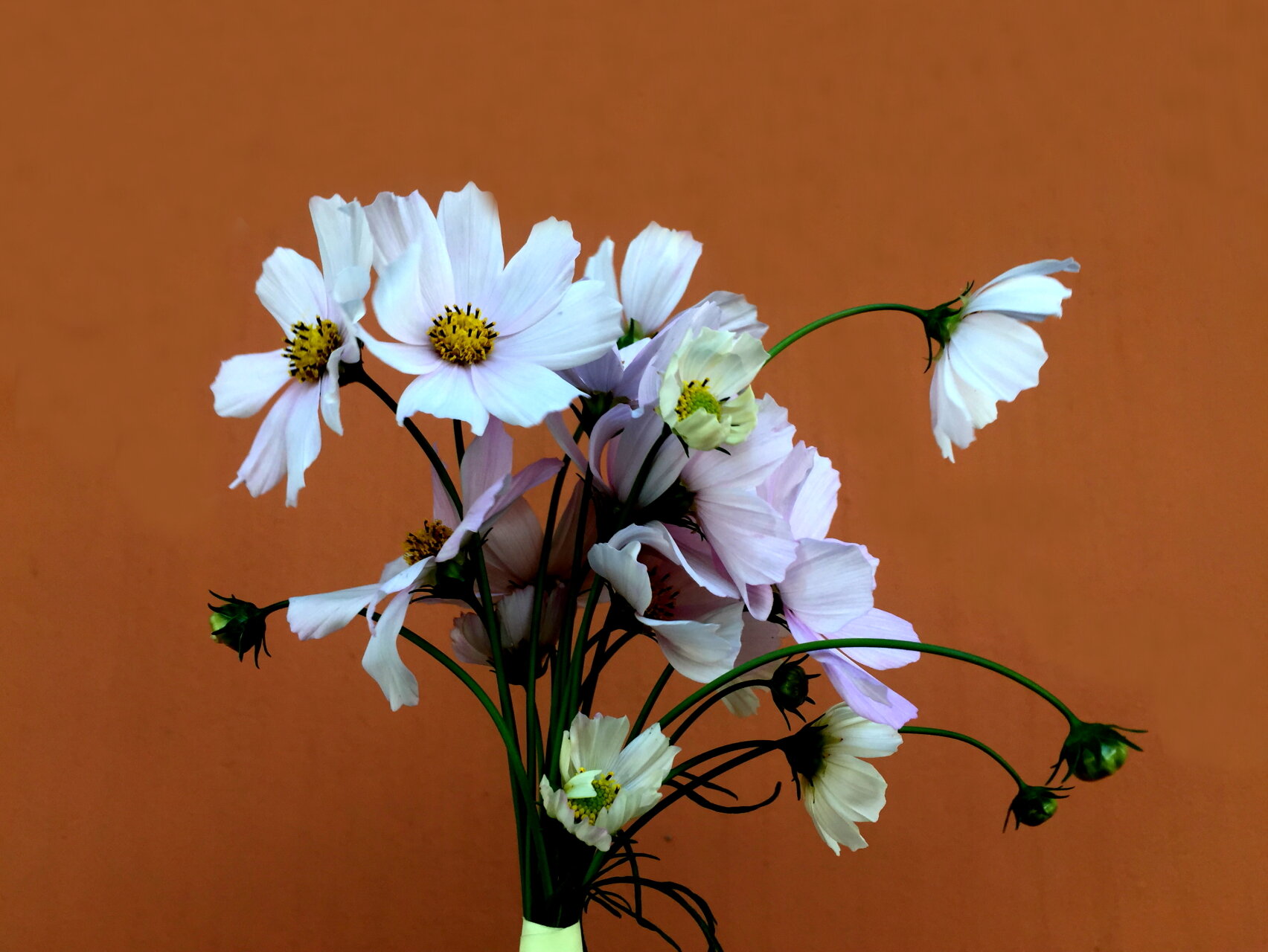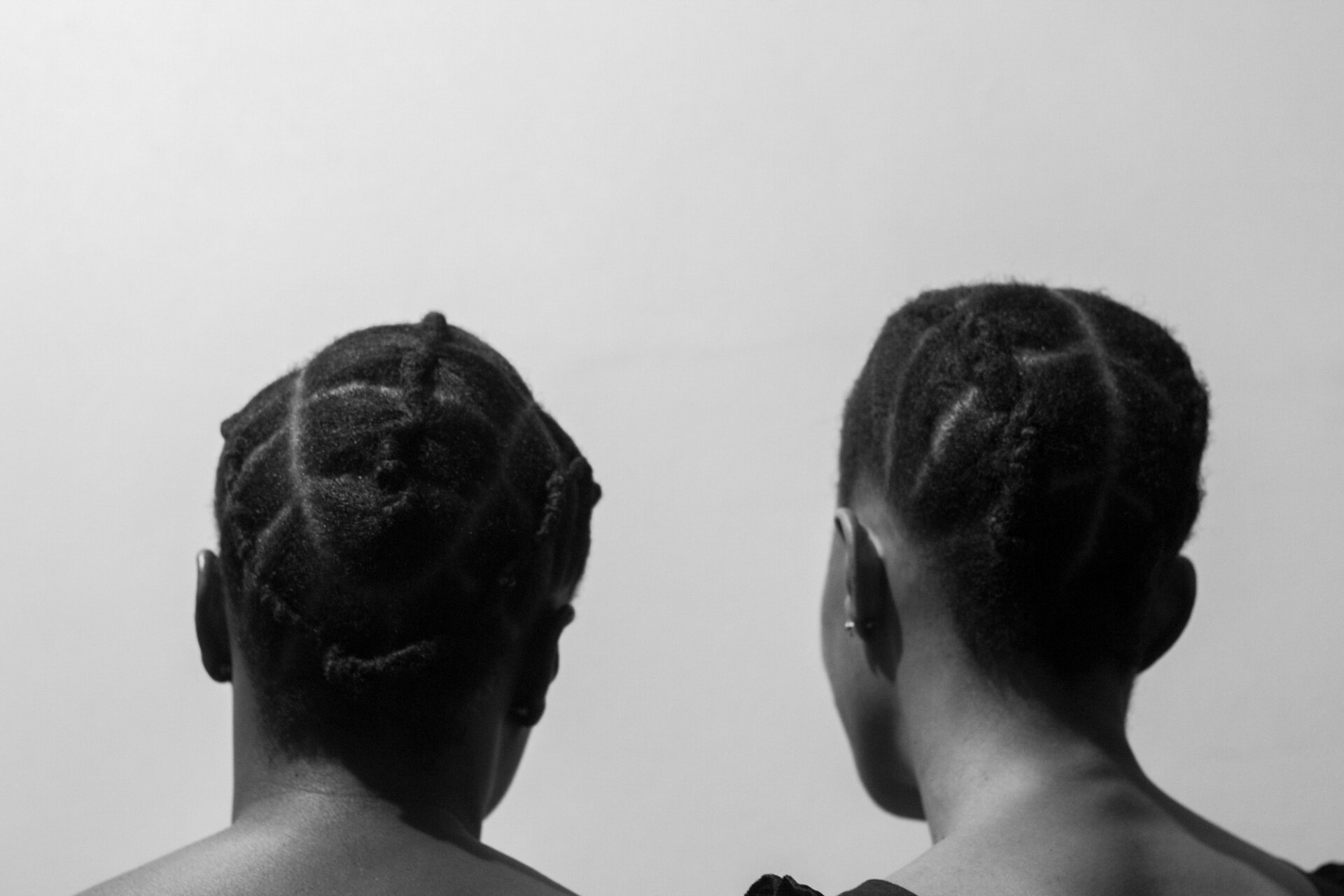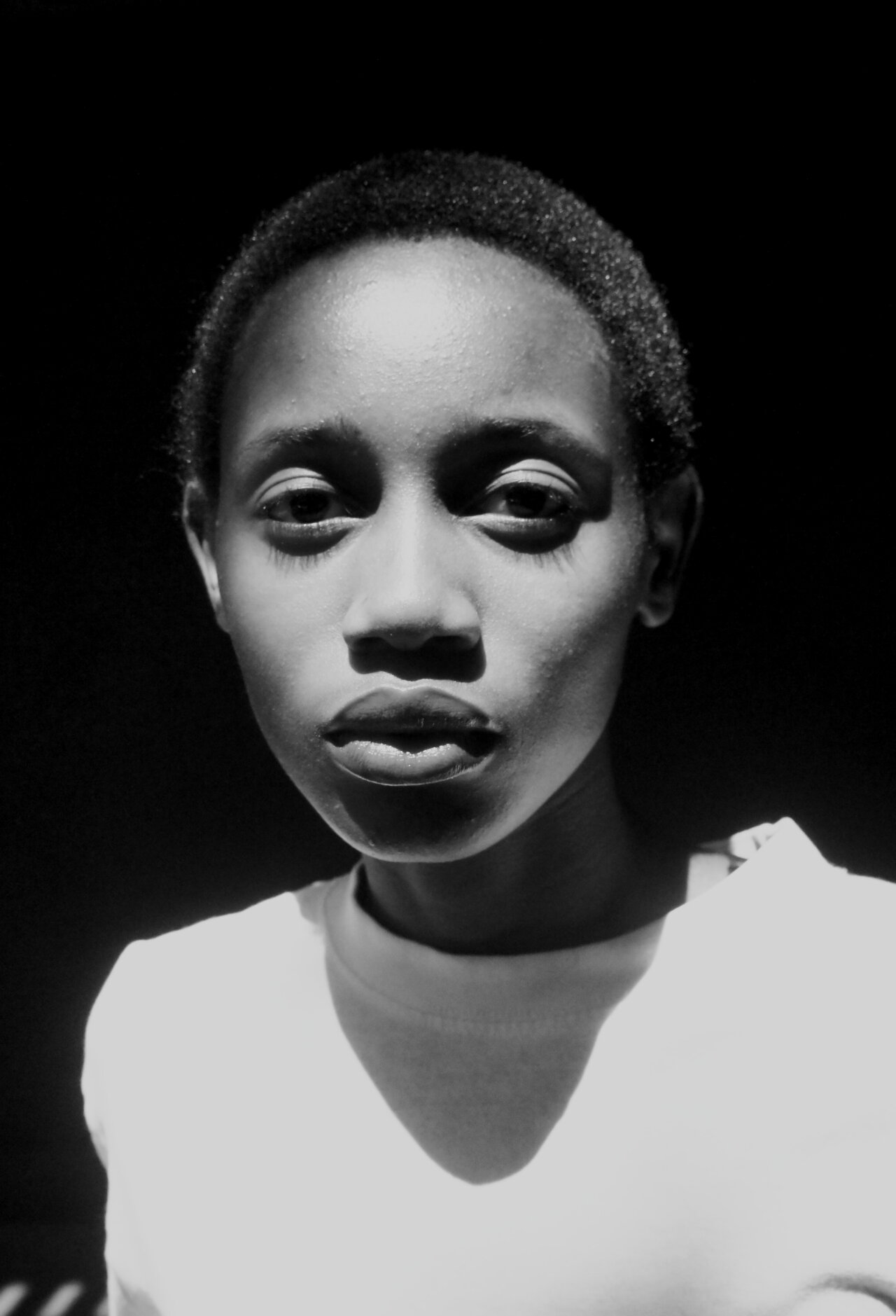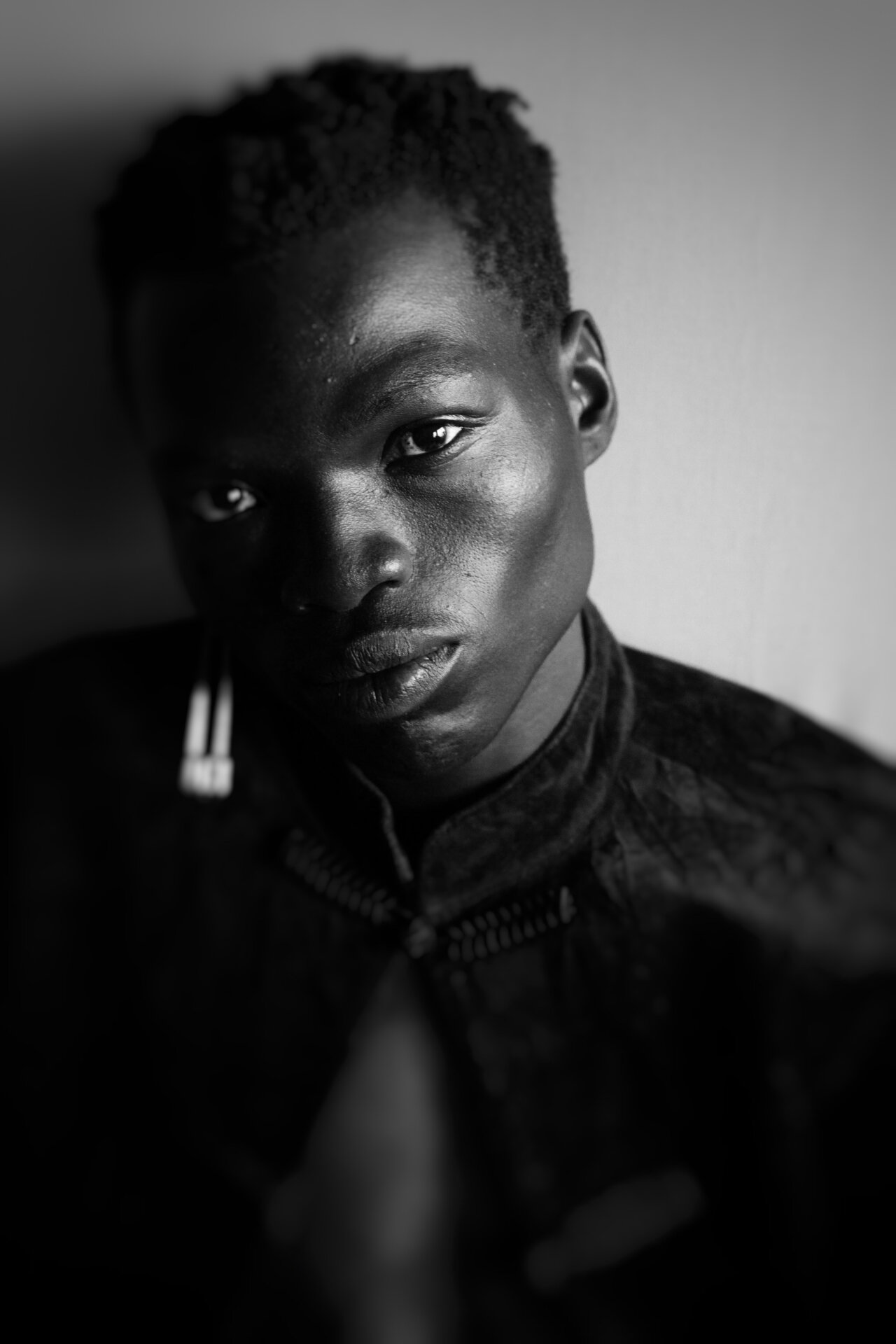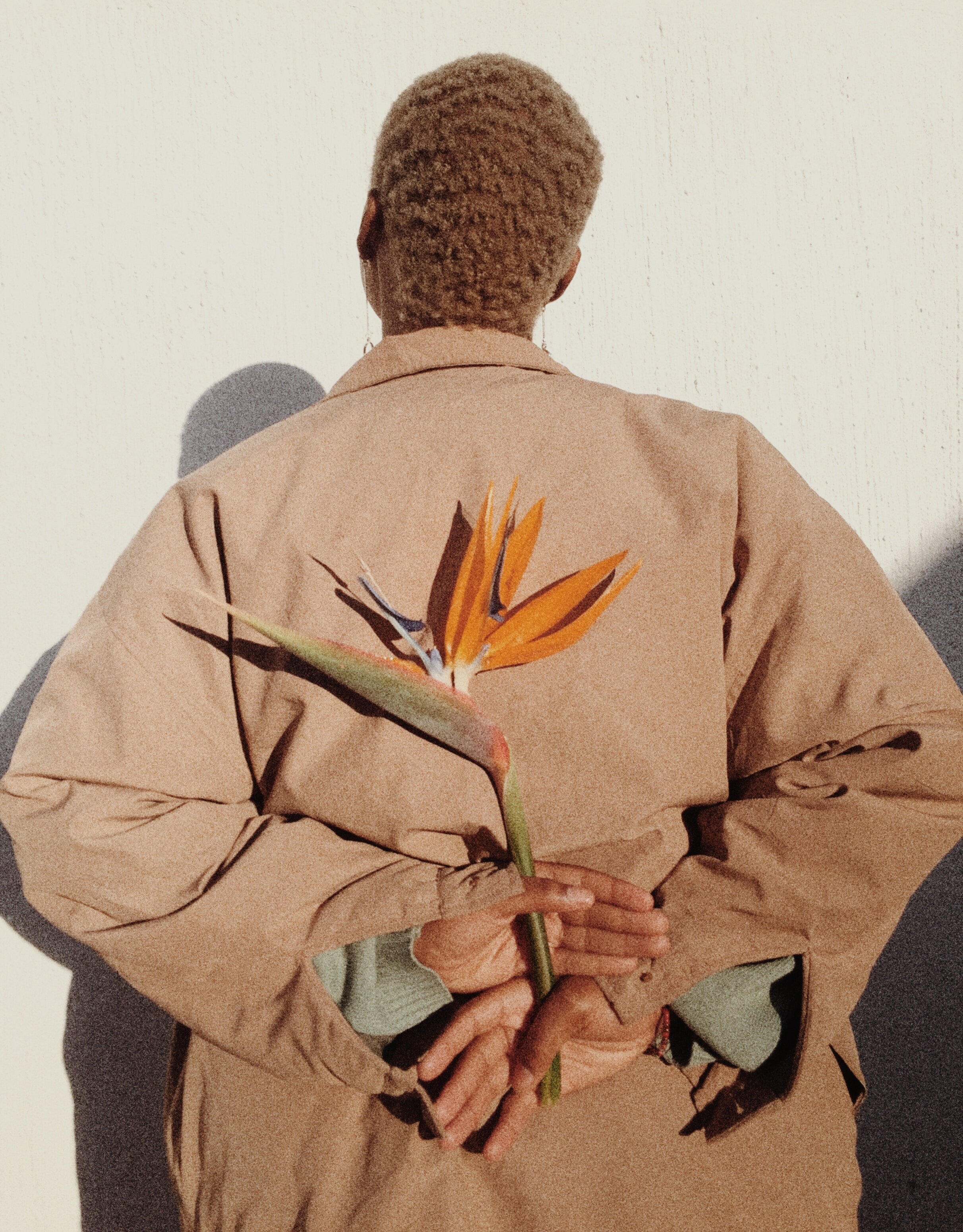In Conversation with Nonzuzo Gxekwa
Nonzuzo Gxekwa and Julie Bonzon, June 2020
JB: Is there a specific theme connecting your photographs?
NG: I think the work is framed around beauty. What draws me to the people I photograph is how they represent themselves—how they go about their day and how they dress. For all of them, it’s bold, whether it’s their hair or their clothing. There is an element of representation and beauty in clothing as a statement of how people want to be seen in the world. What interests me is the confidence they exhibit.
JB: How did you select the people in your photographs? In what context did you take the pictures?
NG: Most of the people are photographed on the streets; it’s quite random, based on who I see while walking or commuting to work in Johannesburg. I like to explore the idea of masculine and feminine representations in images and question what defines masculinity, for example—is it the clothing, or the values you grew up with? When I photograph people, I ask them to be themselves, and it’s always interesting to see how they pose (laughs). It’s always staged to a certain degree.
JB: Could you tell me more about the photograph of the two women taken from the back?
NG: Hair is also a common theme in my work. In recent years, black women have been wearing their hair naturally regardless of the spaces they occupy. It’s very interesting to see how hairstyles we grew up with, like ‘bantu knots’ and Benny and Betty cornrows, which were not considered beautiful back then and were just styles to keep hair tidy at home, are now celebrated in public. It’s refreshing to see women embracing short and natural hair, which is not relaxed, and feeling truly beautiful. My pictures are about hair but also about beauty in general. These are all beautiful women with something sparkling about their features and their eyes.
JB: What about the flowers?
NG: I am also very fascinated by flowers, though I’m not entirely sure why. I guess I photograph them because it’s a bit easier than shooting people, with all the negotiation and explanation (laughs), which can be challenging sometimes. Flowers are beautiful and hold different meanings for different people. They make me happy.
JB: I find your close-up portraits amazing; there’s a sense of intimacy. Did you know these people before taking their pictures? They look so comfortable posing for you.
NG: I usually meet them on the day I photograph them. I might run into them randomly, and the interaction can take less than five minutes (laughs). They probably just felt confident in front of the camera. Unlike most photographers, my work isn’t heavily planned; often, it’s driven by intuition. Many of my images are spontaneous, but in those brief moments with people, there’s a connection that can make something magical happen.
JB: Could you tell me more about the relationship between your work and the LGBTQIA community?
NG: Another aspect of my photography involves documenting the LGBTQIA community. When I have the time, I attend Pride events. I’m captivated by how people present themselves, such as an individual wearing a T-shirt with ‘selfie’ on it. Often, this community is misunderstood or not given the opportunity to fully express and be confident in their identities.
JB: How did you start photography? What inspired you to begin taking pictures?
NG: It’s a combination of two things. There’s a particular photograph my twin sister took of me that really changed how I perceived images. Additionally, being in Johannesburg, coming from a small town and encountering so many new things, I wanted to document and remember them. Joburg can be challenging for newcomers, but I’m drawn to the small details that make the city beautiful—the people, the colours, the buildings. I’m moved by how people carry themselves despite their circumstances. This is why I sometimes photograph people from the back, especially in my street photography. I’m intrigued by their movement and how they dress, and the energy of people often connects me to them.
JB: I noticed that you have two different Instagram profiles: 'nonzuzogxekwa' and 'taxidiaries'. Why did you choose the title 'taxidiaries'? Is there a connection to Johannesburg?
NG: I commute every day. I live in the suburbs, about twenty minutes away from central Johannesburg (the CBD), and I use public transport, with taxis being my primary mode. Some of the images on 'taxidiaries' are taken while I’m in a taxi or around taxi ranks. It’s almost like a daily diary of my journey to and from the city and my interactions with that space.
JB: How would you describe Johannesburg to someone who doesn’t know much about it?
NG: Johannesburg is a large, busy place where you can easily get lost. Many of my friends are afraid to go to the city. There’s dirt on the streets, overcrowded buildings, people selling vegetables, others using drugs, and even someone stealing a phone—everything happens there. It can be overwhelming, with people bumping into each other and a persistent unpleasant smell. But amid the chaos, there is always something beautiful. There’s life, a vibrant energy, people laughing, and great food (laughs). You just need to know where to go. Everyone comes to Joburg in search of their dreams and better opportunities, but not everyone is fortunate. The city is constantly evolving.
The transcription of this interview was made possible thanks to Le projet IMPACT by Xavier Gradoux & Jérôme Jacquin.

